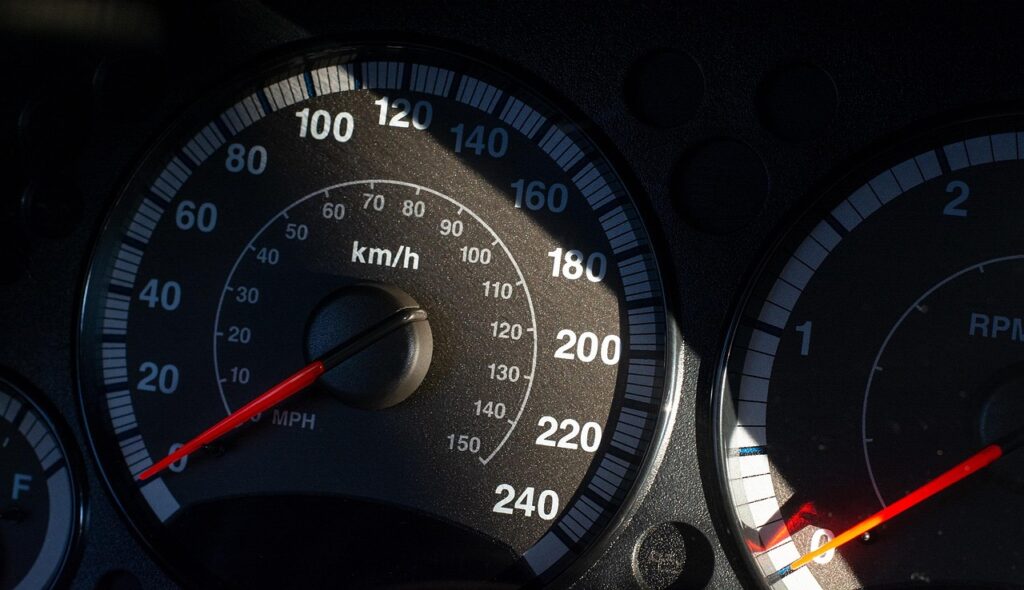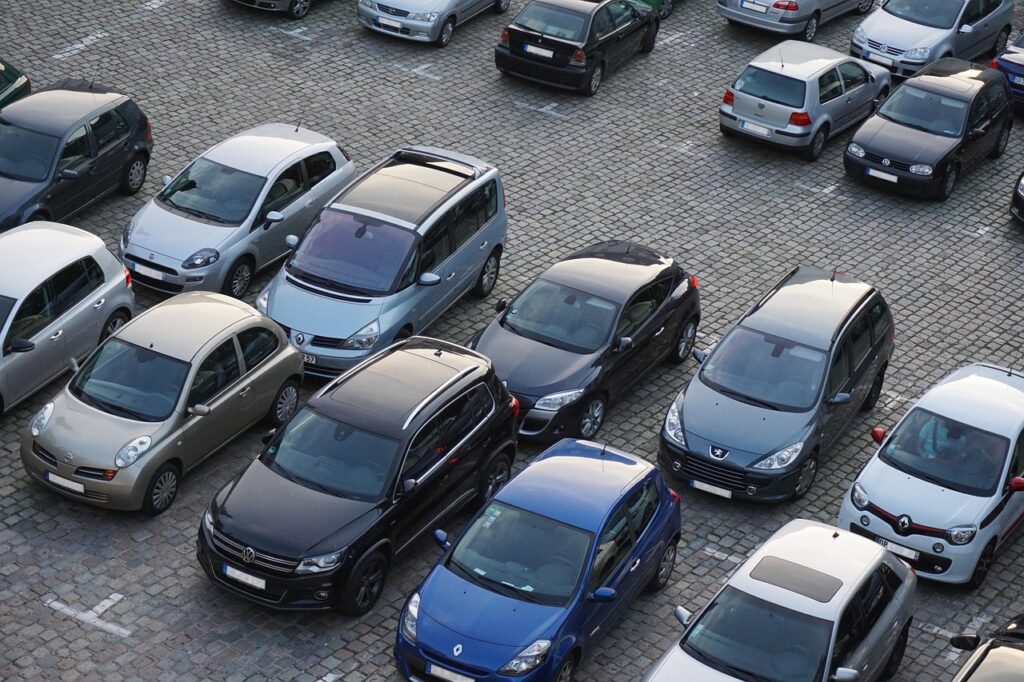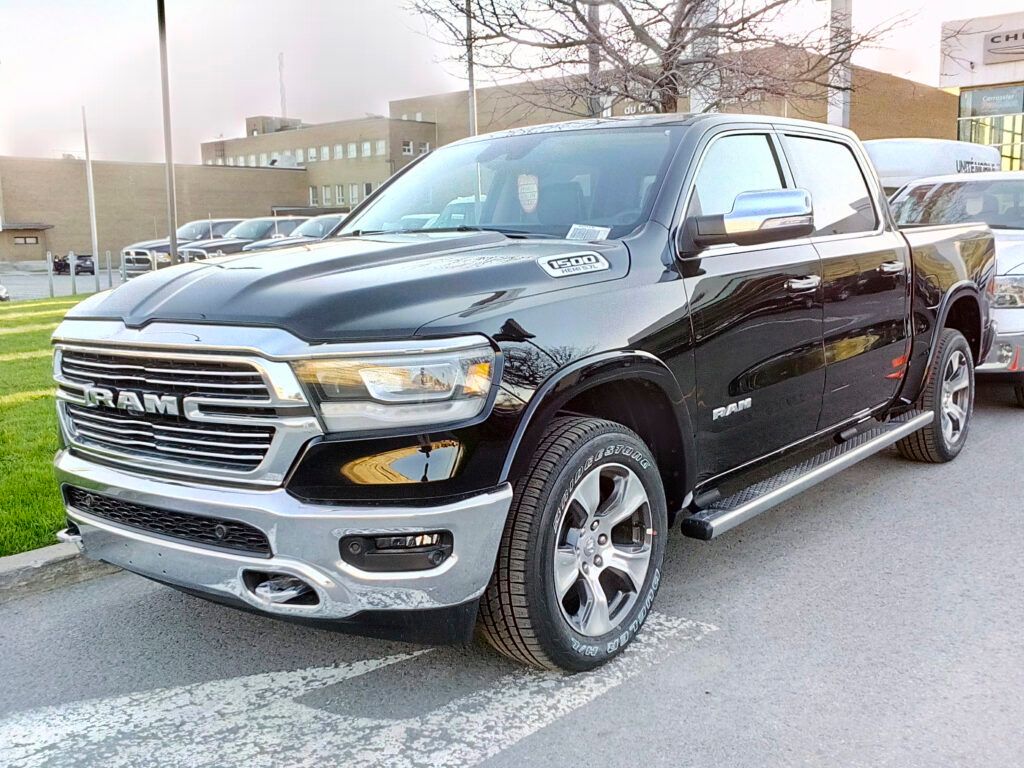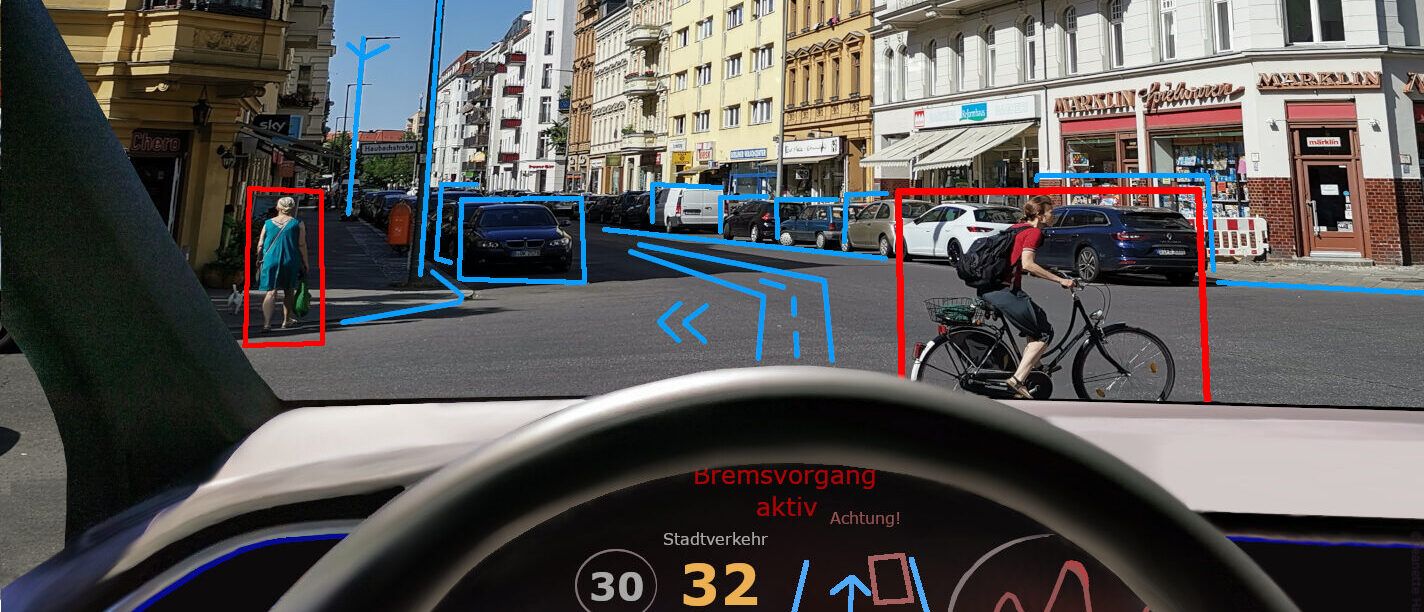
Navigating the complexities of modern driving requires more than just knowing how to operate a vehicle; it demands keen awareness, developed skills, and smart strategies. From the very first driving lesson to seasoned experience, certain maneuvers consistently present challenges, chief among them being the art of backing up safely and confidently. It’s a skill often underestimated, yet one that holds significant implications for safety, efficiency, and even your wallet.
At Toms Driving Academy, where instructors have been guiding drivers since 1969 with over four decades of experience, the philosophy centers on individualized instruction to accommodate every stage of life, whether you’re a teen, an adult, or a senior citizen. This tailored approach extends to tackling the universal challenge of backing up, which is critical given that poor backing techniques are blamed for approximately 25% of all collisions. These incidents, often occurring at slow speeds in driveways and parking lots, tragically claim hundreds of pedestrian lives annually, many of them children under five.
This in-depth guide is designed to empower you with the knowledge and practical ‘hacks’ to transform your backing-up game, making you a more confident and safer driver. We’ll dive into the most common and costly mistakes drivers make when reversing, offering actionable solutions that reduce risks, save money on repairs, and ultimately, prevent accidents. Let’s explore how to develop good driving habits and integrate expert advice to navigate any backing scenario with ease and precision.
1. **Hitting Fixed Objects While Reversing**Fixed objects, such as concrete poles, building walls, and metal barriers, are often the culprits behind the most expensive backing mishaps. Unlike moving vehicles or pedestrians, these obstacles don’t give way, turning a minor misjudgment into a potentially thousands-dollar repair bill instantly. Many drivers overlook these hazards because they tend to blend into the background, or their visibility is obstructed from the driver’s seat.
To proactively avoid these costly encounters, the first step is to perform a thorough visual scan of your intended path before you even begin to reverse. Make a conscious effort to look for concrete bollards, light poles, dumpsters, and wall corners that might not be immediately obvious in your mirrors. If there’s any shred of doubt about clearance, don’t hesitate to step out of your vehicle and conduct a quick walk-around. This brief 30-second inspection can literally save you hundreds, if not thousands, in potential repair costs.
Maximizing your visual field is also crucial. Adjust your side mirrors so they show a slight sliver of your vehicle’s body and the ground directly beside your car. Start by checking your rearview mirror, then continually alternate your gaze between both side mirrors as you reverse slowly. It’s also vital to turn your head and look over your shoulder every few seconds, as mirrors, no matter how well-adjusted, cannot eliminate all blind spots, especially when dealing with fixed objects. Combining mirror checks with direct glances is your strongest defense.
Modern technology offers valuable assistance. Installing backup cameras provides a clear, real-time view of obstacles directly behind your vehicle, often displaying distance guidelines and highlighting objects on your dashboard screen. Parking sensors further complement this by providing audible warnings, beeping faster as you approach barriers. While these technologies are powerful aids, it’s critical to remember they are supplements, not replacements, for fundamental visual checks and good driving habits. They work best in tandem, providing a layered approach to safety.

2. **Backing Into Other Vehicles in Parking Lots**Vehicle-to-vehicle collisions are alarmingly common in parking lots, accounting for nearly 60% of all accidents in these areas. These incidents are not only frustrating but are also among the costliest backing mishaps, frequently leading to insurance claims that range from $1,500 to $5,000 per collision. The dynamic nature of parking lots, with constant movement of cars and people, makes them high-risk environments for reversing maneuvers.
Before you even put your car into reverse, make it a habit to perform a comprehensive 360-degree visual sweep around your vehicle. This means looking for nearby cars, stray shopping carts, and any pedestrians who might be entering your path. Pay particular attention to smaller vehicles like motorcycles and compact cars, which can easily hide within your blind spots. Also, watch out for vehicles with their reverse lights illuminated, as this indicates another driver might be preparing to back out simultaneously, increasing the risk of a collision. This small investment of time can prevent expensive surprises.
When backing, maintaining a slow and deliberate speed, ideally under 2 mph, is paramount. This controlled pace provides you with ample time to process visual information from your mirrors and backup camera, and, critically, to react to unexpected movements. Pause every few feet to reassess your surroundings, as conditions in a parking lot can change in an instant. If your backup sensors start beeping or you spot movement in your mirrors, stop immediately. Children and pets can dart behind vehicles unexpectedly, and other drivers may begin backing out without adequate checks.
Being extra cautious in crowded parking areas, such as shopping centers, grocery stores, and event venues, is non-negotiable due to the high volume of both pedestrian and vehicle traffic. Whenever possible, choose parking spaces that offer better visibility, even if it means a slightly longer walk to your destination. Consider avoiding backing out during peak hours, such as lunch rushes or weekend shopping times, if you have the flexibility. A clever strategy in these high-risk environments is to pull through parking spaces when available, allowing you to exit forward and eliminate the need to reverse entirely.
Read more about: Buyer Beware: 10 Cars of 2025 Plagued by Recurring Mechanical Woes, According to Consumer Complaints and Data
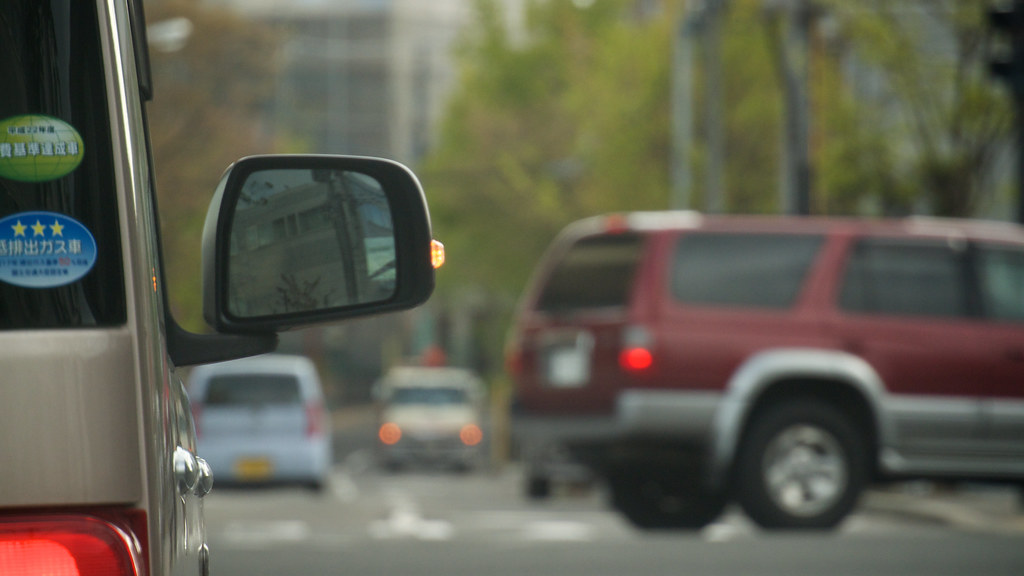
3. **Misjudging Distance and Space Requirements**Accurately judging distances when backing up is a skill that challenges even experienced drivers. This difficulty primarily stems from the significant reduction in depth perception when relying solely on mirrors or backup cameras. Without direct line of sight, estimating how far away an obstacle is or how much room you have to maneuver becomes a mental exercise that requires consistent practice and specific techniques.
To develop better spatial awareness, establish and consistently use reference methods. For instance, repeatedly parking in the same spaces can help build muscle memory, allowing you to instinctively gauge distances over time. Another practical tip is to count seconds while backing at slow speeds; typically, moving at a glacial pace, 3-4 seconds of reversing equals approximately 10 feet of travel. To hone this skill further, practice in empty parking lots using cones or markers to calibrate your distance judgment in a controlled environment. Repetitive practice is key to dramatic improvement.
Identify fixed visual markers on your vehicle that align with obstacles at safe distances. For example, observe how objects appear in your side mirrors when they are 3-4 feet away from your bumper, creating a mental or even physical reference point. Utilize your rear window’s grid lines or the third brake light as consistent distance guides. Some drivers even mark tape on their backup camera screens at key distance points to create personalized reference zones. These personalized reference points can significantly enhance your ability to judge distances accurately.
Crucially, when uncertainty about clearance creeps in, the best and safest strategy is to exit your vehicle and check the actual space. Don’t succumb to the temptation of guessing distances, as this often leads to costly damage. A quick walk behind your car allows you to visually assess the real room available, and you might often discover you have more space than you initially thought, or, conversely, identify a hidden obstacle. This simple, 30-second check is a routine practice for professional drivers in tight spaces and an invaluable habit for every driver.
Read more about: Tesla Ownership: Avoiding Costly Pitfalls That Could Drain Your Wallet and Your Patience
4. **Failing to Check for Pedestrians and Cyclists**Pedestrians and cyclists represent the most dangerous element in backing scenarios because of their unpredictable movements and their ability to appear suddenly in your path. Unlike stationary objects or parked cars, people on foot or bicycles can change direction rapidly, making collision avoidance particularly challenging, even with the aid of modern safety technology. The consequences of such incidents, especially involving children, can be tragic.
Before you ever get into your vehicle to reverse, always perform a complete walk-around. This vital 30-second inspection helps identify pedestrians, cyclists, children, and even pets in the immediate vicinity – hazards that mirrors and cameras might not detect, especially small children playing behind parked cars. Take the time to look underneath adjacent vehicles for feet or toys, which can signal someone’s presence, even if you don’t initially see them. Document the positions of people nearby so you know where to maintain vigilance as you begin your reversing maneuver.
Children under the age of 10 are at the highest risk during backing incidents because they are often below a driver’s sight line and move unpredictably around vehicles. Actively scan for signs of children playing nearby, such as toys, bicycles, or sports equipment, even if you don’t see the children themselves. Adjusting your driver’s seat lower and angling your mirrors slightly downward can improve visibility of shorter individuals. Before you back up, a brief, gentle honk of your horn can serve as an effective alert to anyone who might be approaching or within your vehicle’s path, giving them time to move to safety.
When available, utilize a spotter. Ask a passenger or a bystander to guide you, particularly in crowded areas or tight spaces with significant pedestrian traffic. Ensure your spotter is positioned where they have a clear view of both your vehicle and any approaching pedestrians, and maintain clear sight lines for communication. Establish simple hand signals beforehand: a thumbs-up for clear, a flat palm for stop, and pointing to indicate direction adjustments. It is imperative that you stop immediately if you lose visual contact with your spotter at any point during the backing process. Clear, consistent communication is the bedrock of safe assisted backing.
5. **Backing Too Fast and Losing Control**Speed control is an absolutely critical factor when reversing, largely because you are operating with limited visibility and a naturally reduced reaction time compared to driving forward. Even highly experienced drivers can quickly lose control if they back up too fast, leading to unintended impacts or dangerous maneuvers. The limited visual input from mirrors and cameras makes quick corrections challenging, underscoring the need for a deliberate approach.
To ensure maximum control over your vehicle’s movement, always limit your backing speed to 2 mph or less. This slow, methodical pace allows you to effectively process the visual information coming from your mirrors and backup camera, giving you sufficient time to react to any unexpected obstacles or changing conditions. Attempting to back at speeds above 2 mph significantly reduces your ability to make precise steering adjustments and compromises your reaction time, which no amount of technology can fully compensate for. Patience is your most reliable co-pilot in this scenario.
Throughout the entire backing process, maintain steady pressure on your brake pedal rather than hovering your foot over the accelerator. This technique guarantees immediate stopping power should you encounter an unexpected situation or need to make a rapid correction. Apply gentle, consistent pressure to the brake to control your speed, avoiding the accelerator for momentum. Many drivers unconsciously press harder on the gas when intensely concentrating on backing, which can lead to sudden, uncontrolled acceleration and a dangerous loss of control. Conscious effort to keep your foot on the brake is a crucial safety habit.
Practice smooth, gradual steering movements instead of sharp, abrupt turns when reversing. Quick steering inputs can cause your vehicle to swing out unexpectedly or build momentum that becomes difficult to control, particularly in tight spaces. Dedicate time in empty parking lots to practice coordinating your steering with your speed control, developing the muscle memory for fluid movements. Smooth, consistent inputs enhance your awareness of your vehicle’s position and trajectory, allowing you to maintain better command throughout the entire backing maneuver. This deliberate approach transforms a challenging task into a controlled, safe operation.
Read more about: August 11: Russian Forces Pierce Donetsk Defenses, Sparking Critical Battles Amid High-Stakes Diplomacy
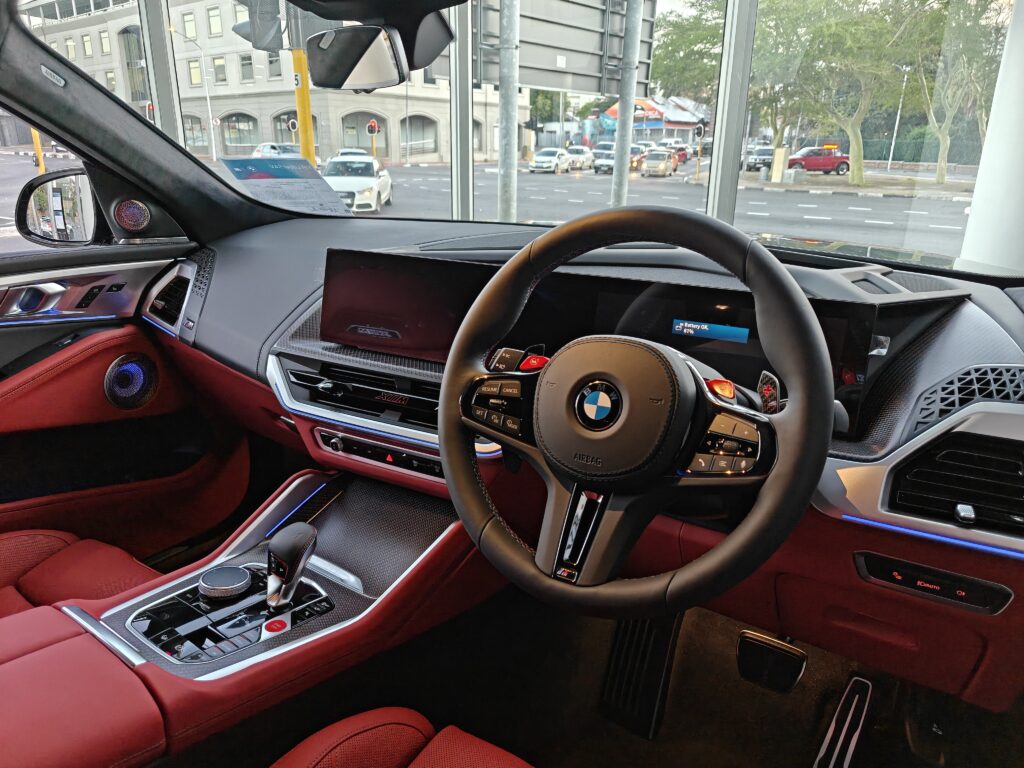
6. **Ignoring Backup Warning Systems**Modern vehicles are increasingly equipped with sophisticated safety technologies designed to prevent backing accidents, yet many drivers either ignore these critical warning systems or fail to utilize them correctly. These systems are powerful tools, but their effectiveness is directly tied to a driver’s understanding and proper integration of them into their driving habits. Over-reliance or under-utilization both negate their protective potential.
Take the time to thoroughly understand your vehicle’s specific safety features. Learn how your backup camera displays distance markers and trajectory lines; most systems use colored grid lines to indicate distances like 2-foot, 4-foot, and 6-foot behind your vehicle. Consult your owner’s manual to grasp what each colored zone signifies and how dynamic guidelines adjust with your steering wheel movements. Familiarize yourself with your parking sensor’s warning patterns – typically, slower beeps at 4-6 feet, faster beeps at 2-4 feet, and a continuous tone when you are under 2 feet. Some premium vehicles even add visual alerts on dashboard displays or side mirrors to augment the audio warnings.
It is crucial to use backup warning systems as valuable supplements to your visual checks, never as replacements. Technology, while advanced, can sometimes fail to detect small objects, thin posts, or items positioned at unusual heights. A comprehensive 360-degree walk-around inspection remains an essential initial step before backing, even if your vehicle boasts advanced sensor arrays and high-definition cameras. The safest approach is to combine multiple safety features for maximum protection: integrate mirror checks, backup camera displays, and parking sensor alerts.
Remember that each safety feature, be it mirrors, cameras, or sensors, has its own blind spots and limitations. Experienced drivers effectively integrate all available tools while maintaining slow speeds, ideally under 2 mph, to ensure adequate reaction time when technology alerts them to potential hazards. Furthermore, maintaining these systems is vital. Clean your backup camera lens weekly, and immediately after driving in harsh conditions, as road salt, mud, or snow can quickly obscure the view. Regularly test your parking sensors by walking behind your vehicle to ensure they are functional, and replace faulty sensors promptly. A small repair cost for a sensor far outweighs the potential damage of an avoidable accident.
Read more about: Extreme Cold Warning: 18 Mistakes That Could Cost You
7. **Poor Communication When Someone Is Guiding You**Relying on a spotter during complex backing maneuvers, especially in crowded or tight spaces, can feel like having an unfair advantage – an extra set of eyes dedicated to your safety. However, this powerful safety net is only as effective as the communication between you and your guide. Misunderstandings, even seemingly minor ones, can quickly escalate, leading to accidents that are often more severe and unexpected than backing up without any assistance at all. The critical hack here is to proactively eliminate any room for misinterpretation.
Before you even engage reverse gear, establish a clear, concise system of hand signals that both you and your spotter fully comprehend. Simple, universally understood gestures are paramount. A flat palm held up for “stop,” distinct pointing to indicate the direction of movement, and a firm thumbs-up for “keep coming back” are excellent examples. Crucially, practice these signals briefly in a low-pressure environment. This pre-briefing ensures that a “slow down” gesture isn’t mistakenly interpreted as a “continue backing” command, preventing those critical, split-second errors.
During the entire backing process, maintaining constant, direct eye contact with your spotter is non-negotiable. Position your guide strategically so they remain clearly visible in your side mirrors or, if your vehicle is equipped, prominently displayed on your backup camera screen. This placement should allow you to see their signals without contorting your body or diverting your attention excessively from your surroundings. Should your spotter momentarily disappear from your line of sight for any reason, initiate an immediate and complete stop. Safety demands that you never move your vehicle if your guide is out of view.
Remember, your spotter isn’t a static observer; they should actively move to maintain clear visual contact as your vehicle’s trajectory changes. If communication becomes ambiguous—perhaps a signal is unclear, or you simply can’t understand what they mean—do not guess. The smartest hack is to halt your vehicle instantly. Get out, re-engage with your spotter face-to-face, verbally clarify the situation, and then re-establish your agreed-upon plan. Rushing through moments of uncertainty or pressing on despite unclear signals is a surefire way to invite a costly and avoidable accident. This momentary pause is a small price to pay for significant peace of mind and prevented damage.
Beyond hand signals, consider vocal cues if conditions allow. Short, direct phrases like “Stop,” “Back left,” or “Clear” can reinforce visual signals, adding another layer of security, especially in noisier environments. However, ensure vocal commands are succinct and consistent to avoid confusion. The ultimate goal is a seamless, intuitive exchange of information that empowers you to back up confidently, knowing you have a reliable, well-communicated safety partner.
Read more about: A Life of Laughs and Silent Battles: Revisiting Robin Williams’ Enduring Legacy and the Unseen Struggles He Faced
8. **Understand Your Spatial Limitations in Crowded Areas**Navigating the concrete jungles of urban environments, particularly through bustling parking lots or along narrow, packed streets, is a masterclass in precision driving. These areas are inherently designed to maximize space utilization, meaning that the margin for error is razor-thin. Even for experienced drivers, this presents a unique challenge, making every turn and every inch of movement a critical decision. It’s a delicate dance where misjudgments can quickly lead to costly scrapes and dings.
The foundational hack for conquering these tight spots begins with a profound understanding of your vehicle’s physical dimensions and, crucially, the severely constrained environment you’re operating within. In cramped urban arteries, the concept of “lane room” often evaporates. You are constantly in intimate proximity to immovable objects: parked cars, towering streetlights, mature trees, and an ever-present flow of cyclists and pedestrians. This reality effectively eliminates opportunities for spontaneous lane changes, passing slower traffic, or quick evasive maneuvers around unexpected jams.
Your primary strategy should be a commitment to your chosen lane, coupled with a vigilant, continuous assessment of your surroundings. Keep your head on a constant swivel, systematically checking mirrors, windows, and blind spots. This constant scanning ensures you’re aware of every potential encroachment on your limited space. This hack demands hyper-awareness, treating every inch of available space as a valuable commodity that must be carefully managed.
An often-overlooked yet incredibly effective hack, if circumstances allow, is selecting a smaller vehicle for navigating these dense urban landscapes. A compact car or a smaller SUV naturally possesses greater agility and a tighter turning radius compared to larger trucks or full-size SUVs. This inherent maneuverability can drastically reduce the stress and difficulty of threading through tight gaps, transforming a potentially anxiety-inducing journey into a much more manageable and less taxing experience. Always consider your vehicle choice in relation to your likely driving environment.
Furthermore, internalize the fact that in these settings, your vehicle’s exterior — mirrors, bumpers, and side panels — are highly susceptible to contact. Develop a mental “buffer zone” around your car, constantly evaluating if that zone is being compromised. If you find yourself repeatedly brushing up against obstacles, it’s a clear signal to refine your spatial judgment. This ongoing self-assessment is key to building the intuitive understanding required for tight urban navigation.
9. **Managing Congestion with Patience and Smart Route Choices**Congestion in metropolitan areas is not a possibility; it’s an absolute certainty. This inescapable reality is something every urban driver must accept and, more importantly, mentally prepare for. One of the most critical hacks for a less stressful and safer drive isn’t about finding a secret bypass, but rather about managing your own psychological response. An impatient or overly frustrated driver is a ticking time bomb, exponentially more likely to make impulsive, reckless decisions that frequently culminate in accidents, minor collisions, and a significant spike in personal stress levels. Embracing this inevitability is the foundational step toward smarter navigation.
Resist the compelling yet almost always counterproductive temptation to deviate from known routes by cutting through unfamiliar side streets or narrow alleys. While your GPS might sometimes suggest these as “shortcuts,” they are rarely designed for consistent automotive traffic flow. More often than not, these detours lead to unexpected dead ends, even tighter squeezes than the main thoroughfare, or encounters with unforeseen obstacles like delivery trucks or sudden pedestrian crossings. Such impromptu route changes almost invariably extend your travel time, paradoxically increasing both stress and potential hazards.
Instead of engaging in a futile battle against the flow of traffic, the most empowering hack is a fundamental shift in mindset. Acknowledge and internalize that rapid passage through heavy congestion is simply not an option. You are part of a larger system, and trying to outmaneuver it often creates more problems than it solves. This acceptance allows you to operate from a place of calm rather than agitation.
Embrace the slower pace as an opportunity. Use this time to enhance your observational skills, actively scan for potential hazards, and mentally rehearse upcoming maneuvers. Trust in the knowledge that you will eventually reach your destination, even if it takes a little longer than you’d prefer. This profound mental hack of patience and acceptance can dramatically reduce the cognitive load and emotional strain associated with driving in heavily congested urban environments, fostering a safer and more predictable journey.
Finally, always pre-plan your route, especially during peak hours, and try to use real-time traffic apps not just for estimated arrival times, but for understanding *where* congestion is building. While you might not avoid it entirely, knowing what to expect can temper impatience. Consider scheduling your travel outside of peak rush hours if your flexibility allows; this simple scheduling hack can make a world of difference.

10. **Navigating Peak Volumes and Understanding Area Layouts**Transforming from a reactive driver to a proactive urban navigator is a significant hack for stress-free travel. This transition hinges on a critical piece of preparation: investing a small amount of time to understand the specific layout of the urban area you intend to traverse. This means identifying its most heavily traveled thoroughfares, recognizing common bottlenecks, and knowing where pedestrian crossings are most frequent. This foresight allows you to anticipate challenges long before they manifest, rather than constantly reacting in a state of surprise.
A key component of this proactive approach involves strategically avoiding peak pedestrian traffic whenever possible. High concentrations of people on foot not only slow vehicular movement but also introduce a high degree of unpredictability, significantly amplifying the complexity of driving. Think about common hotspots: school dismissal times, lunchtime rushes in central business districts, or weekend evenings around entertainment venues. These periods invariably mean more sudden stops, more people darting into traffic, and a higher chance of frustrating delays.
If your travel schedule is flexible, aligning your drive times to avoid these pedestrian-heavy periods is an invaluable hack. For example, if you must travel through a busy shopping district, aim for off-peak hours like mid-morning or late afternoon. This simple scheduling adjustment can drastically reduce the number of variables you encounter on the road, making for a smoother, less interrupted journey.
Should your destination undeniably require passage through a notoriously congested or pedestrian-heavy area during unavoidable peak times, consider an even cleverer hack: strategic remote parking. Instead of battling for a spot directly at your destination, choose a slightly less-crowded, perhaps even free, parking location a short distance away. Completing the final leg of your journey on foot offers multiple benefits: it bypasses the most intense traffic snarls, eliminates the stress of finding a tight parking spot, and provides a refreshing break from driving, converting a potential headache into a simple, calming walk.
Read more about: Navigating the Autobahn’s Complexities: The 200 MPH Incident and Germany’s Ongoing Debate Over Speed Limits

11. **Yielding Right-of-Way to Pedestrians and Bikers**While yielding to the right-of-way is a fundamental tenet of responsible driving everywhere, its importance is magnified tenfold in the dense, dynamic ecosystems of crowded urban environments. Here, streets are shared spaces, teeming with vulnerable road users like pedestrians and cyclists who often exist outside the protective shell of a vehicle. Consciously and consistently yielding, even when the letter of the law might technically grant you passage, is not merely a courtesy; it is an indispensable safety hack that directly prevents collisions and fosters a more harmonious urban flow.
A common and sometimes frustrating reality in heavily walked urban zones is that pedestrians do not always strictly adhere to traffic signals. You will frequently encounter individuals who begin crossing streets prematurely, or who continue to cross even after their light has turned red, perhaps distracted or simply in a hurry. While such behavior can certainly test a driver’s patience, your primary role remains to anticipate these actions and prioritize safety above all else. Aggressive driving, horn honking, or attempting to “thread the needle” through a stream of pedestrians in these situations dramatically elevates the risk of a severe collision, with potentially tragic and life-altering consequences.
Therefore, ingrain this as an absolute, non-negotiable rule: maintain your foot firmly over the brake pedal and patiently allow pedestrians and cyclists to completely clear your intended path before you even consider releasing the brake or touching the accelerator. That seemingly insignificant pause of a few extra seconds is a negligible price to pay when weighed against the profound regret and devastation that can result from a backing incident involving a vulnerable road user. This defensive driving hack not only safeguards those outside your vehicle but also significantly reduces your own stress, enabling a safer, far more predictable, and ultimately less anxious journey through the bustling urban landscape.
Make eye contact with pedestrians and cyclists whenever possible. This simple human connection can often de-escalate potential conflicts and clearly communicates your intention to yield. It reinforces the idea that you are aware of their presence and are allowing them to pass safely, creating a sense of predictability that is essential in chaotic urban settings. This small gesture is a powerful hack for establishing mutual respect on shared roads.
Recognize that in urban areas, the “right-of-way” is often interpreted differently by various road users. As a driver, you hold the most power and potential for harm. This means taking on the greater responsibility. By consistently yielding, you are setting a positive example and contributing to a safer driving culture. This isn’t just about avoiding a ticket; it’s about being a conscientious member of the urban community.
12. **Essential Vehicle Maintenance for Urban Driving**The relentless cycle of stop-and-go traffic, frequent acceleration, and low-speed maneuvers that define crowded urban driving places an extraordinary amount of stress on your vehicle’s critical components. Unlike the relatively smooth and consistent demands of highway cruising, city driving relentlessly taxes your braking system, transmission, engine, and tires. Neglecting regular vehicle maintenance in these conditions isn’t merely a lapse in judgment; it’s an open invitation for a breakdown at the most inconvenient and potentially dangerous moment, further exacerbating already problematic congestion and creating immediate safety hazards.
Implementing a proactive and rigorous maintenance hack is absolutely crucial for urban drivers. Begin by regularly monitoring your tire pressure, ensuring it consistently meets the manufacturer’s recommended specifications. Correctly inflated tires are vital; they not only optimize fuel efficiency but, more importantly, ensure superior handling and significantly improved braking performance, which is indispensable during the frequent stops and sudden reactions required in city traffic. Under-inflated tires can lead to premature wear and compromised safety.
Equally vital is maintaining optimal levels of your engine oil, transmission fluid, and brake fluid. These essential fluids are the very lifeblood of your vehicle’s most critical systems. Low or degraded fluid levels can rapidly lead to increased friction, overheating, premature component wear, and in severe cases, catastrophic system failure. This includes brake fade, transmission issues, or engine seizure – all scenarios you absolutely want to avoid in a busy intersection. Regular checks and timely top-offs are simple hacks that prevent massive headaches.
Furthermore, do not underestimate the value of scheduling regular tune-ups for your engine. A well-tuned engine runs more efficiently, produces fewer emissions, and is far less prone to unexpected mechanical failures. This preventative hack is your best defense against those infuriating and potentially dangerous breakdowns that can cripple traffic flow and put you and others at risk. A small investment in routine maintenance today can save you from substantial repair costs and roadside emergencies tomorrow.
By consistently keeping your vehicle in peak working order, you are not only safeguarding your investment but also enhancing your ability to safely navigate the unique challenges of urban driving. When combined with acute awareness of spatial restrictions and other specific risks, a meticulously maintained vehicle empowers you to tackle any congested area with far greater confidence, reliability, and ultimately, peace of mind. Your vehicle is your partner on the road; treat it well, and it will serve you reliably.
Read more about: 10 Cars to Skip: They Become Costly Money Pits After 100,000 Miles
Mastering the dual arts of backing up safely and confidently navigating the intricate, often chaotic, landscapes of crowded urban environments isn’t just about sidestepping expensive repairs or the hassle of insurance claims. It’s a profound commitment to protecting yourself, your passengers, and every other individual who shares the road, whether on foot, two wheels, or four. The comprehensive strategies and ingenious ‘hacks’ meticulously detailed throughout this guide are specifically engineered to empower you with the knowledge, practical skills, and unwavering confidence necessary to transform challenging driving scenarios into routine, stress-free maneuvers. Remember, the journey towards becoming a truly expert driver is not a sprint; it’s a marathon paved with patience, persistent practice, and an unyielding dedication to learning. Take your time to incrementally integrate these invaluable techniques into your daily driving habits, and critically, never underestimate the unparalleled power of vigilant observation. While the marvels of modern automotive technology undoubtedly enhance safety, they serve as powerful supplements, never as ultimate replacements, for sound judgment, active awareness, and intelligent decision-making. By strategically combining the very best of both worlds – leveraging advanced vehicle features alongside tried-and-true defensive driving techniques and impeccable communication – you will not only evolve into a more capable and assured driver but also contribute significantly to fostering safer, more predictable, and more harmonious roads for everyone.



